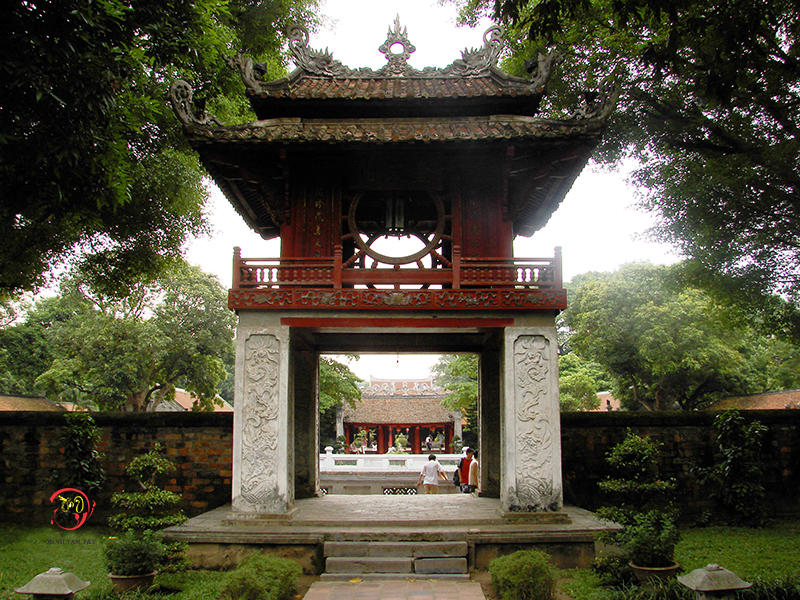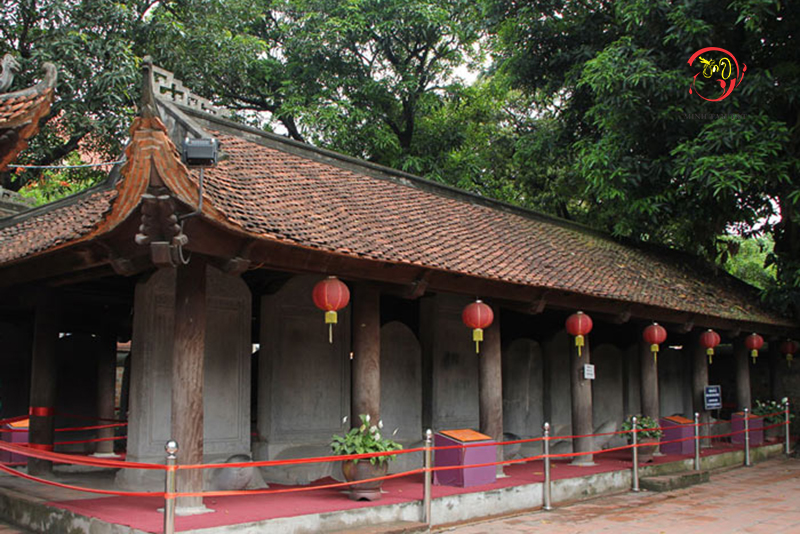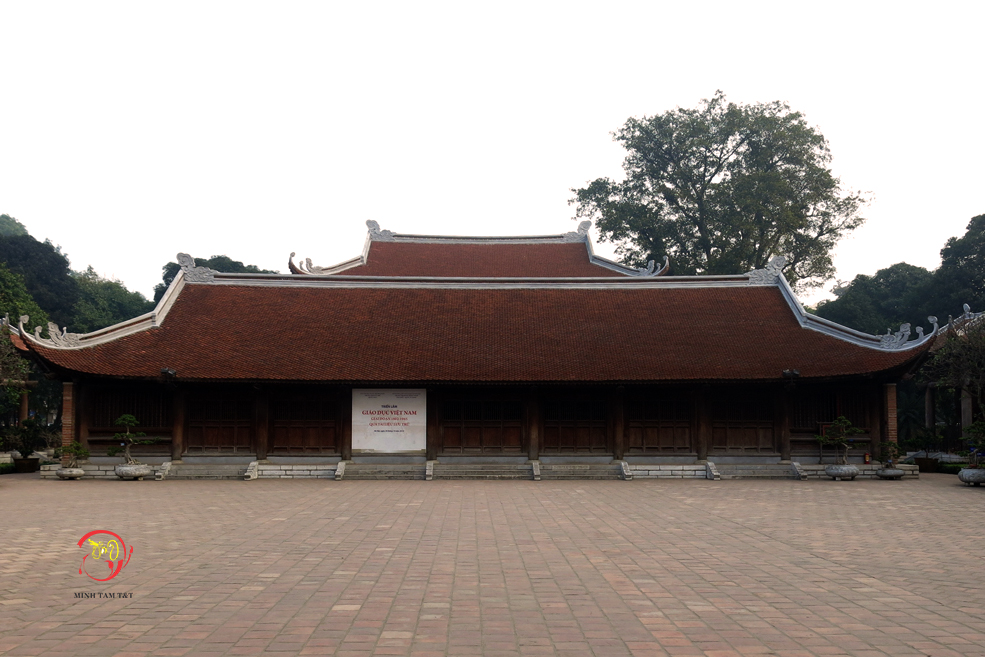Location: 58 Quoc Tu Giam Street, Dong Da District, Ha Noi
Characteristics: This is considered as the first college of Viet Nam and the symbol of Ha Noi Capital.
◊ Formation History
(TITC) – Van Mieu (Temple of Literature) was built in 1070 under King Ly Thanh Tong’s reign to worship Confucius, Confucianism sages, scholars and had the function as the royal school. In 1076, King Ly Nhan Tong had Quoc Tu Giam built next to Van Mieu as a university for princes and mandarins’ sons. In 1253, King Tran Thai Tong had Quoc Tu Giam expended and accepted all excellent students. Under King Tran Minh Tong’s reign (1314 – 1329), Teacher Chu Van An was appointed as rector of Quoc Tu Giam and responsible for teaching princes. In 1785, King Le Hien Tong renamed Quoc Tu Giam to Thai Hoc House. In the early Nguyen Dynasty, Thai Hoc House was moved to Hue.
◊ Architecture
In front of Van Mieu, on the other side of Quoc Tu Giam Street, there is a large lake called Van (Literature) Lake. On Kim Chau Mound in the middle of the lake exists the stele erected in 1865 with text of Van Mieu remodelling process.
Located in the 54,000m² campus with surrounding wooden-hammer brick wall, Van Mieu – Quoc Tu Giam includes 5 separate zones.
The first zone extends from Van Mieu Gate (Great Portico) to Dai Trung Gate. Two-floor Van Mieu Gate consists of 3 arch doors. The second floor of the gate has a bell. Walking along the brick path, visitors come to 3-door Dai Trung Gate.

The second zone spreads from Dai Trung Gate to Khue Van Pavilion. Built in 1805, Khue Van Pavilion (the pavilion with the beauty of Venus – the literature star) is a square pavilion with 2 floors and 2-layer roof. The two sides of Khue Van Pavilion are Bi Van Gate and Suc Van Gate. The gates’ names mean to praise the beauty and value of literature. Khue Van Pavilion is a unique architectural work and the symbol of Vietnamese culture and literature.
Crossing Khue Van Pavilion, visitors come to the third zone with Thien Quang Well and the system of stone steles recording royal examinations. Thien Quang Well (or Van Pond) is square shape and filled with water all year round. The two sides of Thien Quang Well are the stele house zones. These are an important relics in Van Mieu – Quoc Tu Giam, including 82 steles which record the royal examinations of Le and Mac dynasties (1442-1779). All steles are of the same model: the slab is flat with an arched pediment and tortoise-shaped base; the tortoise is rather big and looks strong; the steles are different in sizes. Every stele is put on stone tortoise’s back to represent everlasting national quintessence and reflect historical and cultural values of Viet Nam through 300 years. With the outstanding and rare values, these 82 steles have been recognized as world documentary heritage by UNESCO since March 2010.

Through Dai Thanh Gate, visitors arrive in the fourth zone, the main zone of Van Mieu – Quoc Tu Giam, including the large yard, Ta Vu and Huu Vu houses, Dai Bai House and Dai Thanh Temple. Dai Bai House has 9 compartments with many horizontal lacquered boards and parallel sentences praising Confucianism and sages in the middle compartment. Behind Dai Bai House is 9-compartment Dai Thanh Temple where worships Confucius.
The fifth zone is Thai Hoc House or Quoc Tu Giam, where trained talents for the dynasties. In 1999, Thai Hoc House Zone rebuilt in harmony with the surrounding landscapes includes Front Shrine, Back Shrine, bell tower, drum tower. 9-compartment Front Shrine is the place displaying materials on traditional fondness for learning, great respect for teachers of Vietnamese people. Connected with Front Shrine by a corridor, Back Shrine is a 2-floor wooden architectural work. The first floor is the place worshiping Teacher Chu Van An – World Cultural Celebrity and displaying materials on Van Mieu – Quoc Tu Giam and Viet Nam’s education. The second floor is dedicated to kings who deserved credit for building Van Mieu – Quoc Tu Giam and contributed to national education, namely King Ly Thanh Tong, King Ly Nhan Tong and King Le Thanh Tong.

◊ Cultural Activity
Currently, Van Mieu – Quoc Tu Giam is the place to organize typical cultural activities such as scientific seminars, thematic exhibitions; ceremonies to commend the outstanding graduating students of universities, institutes in Ha Noi; awarding certificates of professor, associate professor; book festivals, Viet Nam poetry day, etc.
With the long-standing history and culture, Van Mieu – Quoc Tu Giam has been recognized as a special national relic since May 2012 and 82 steles which record the royal examinations has been recognized as a national treasure since January 2015. This is an attractive cultural tourist site for visitors to learn about culture and history of Viet Nam.
Opening time: daily, summer: 7.30am – 5.30pm, winter: 8.00am – 5.00pm.
Fare: VND 30,000/person.
Source: Vietnamtoursim.vn
